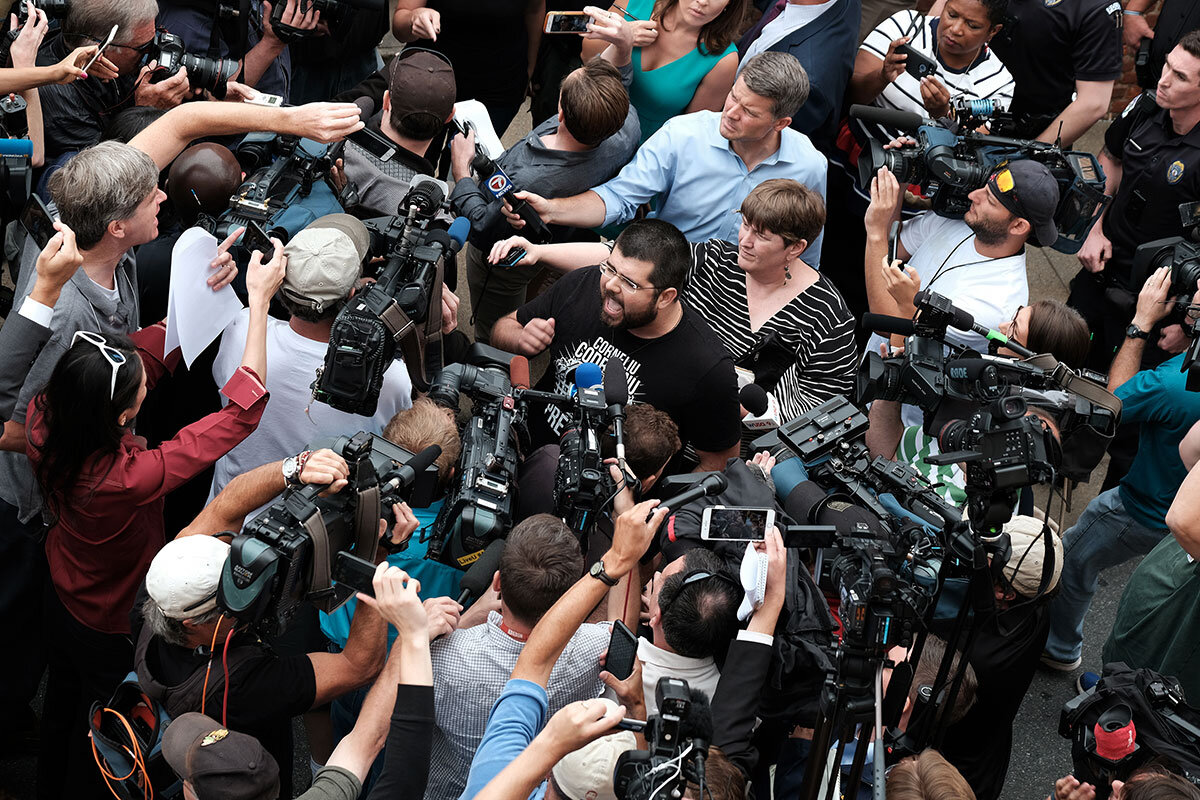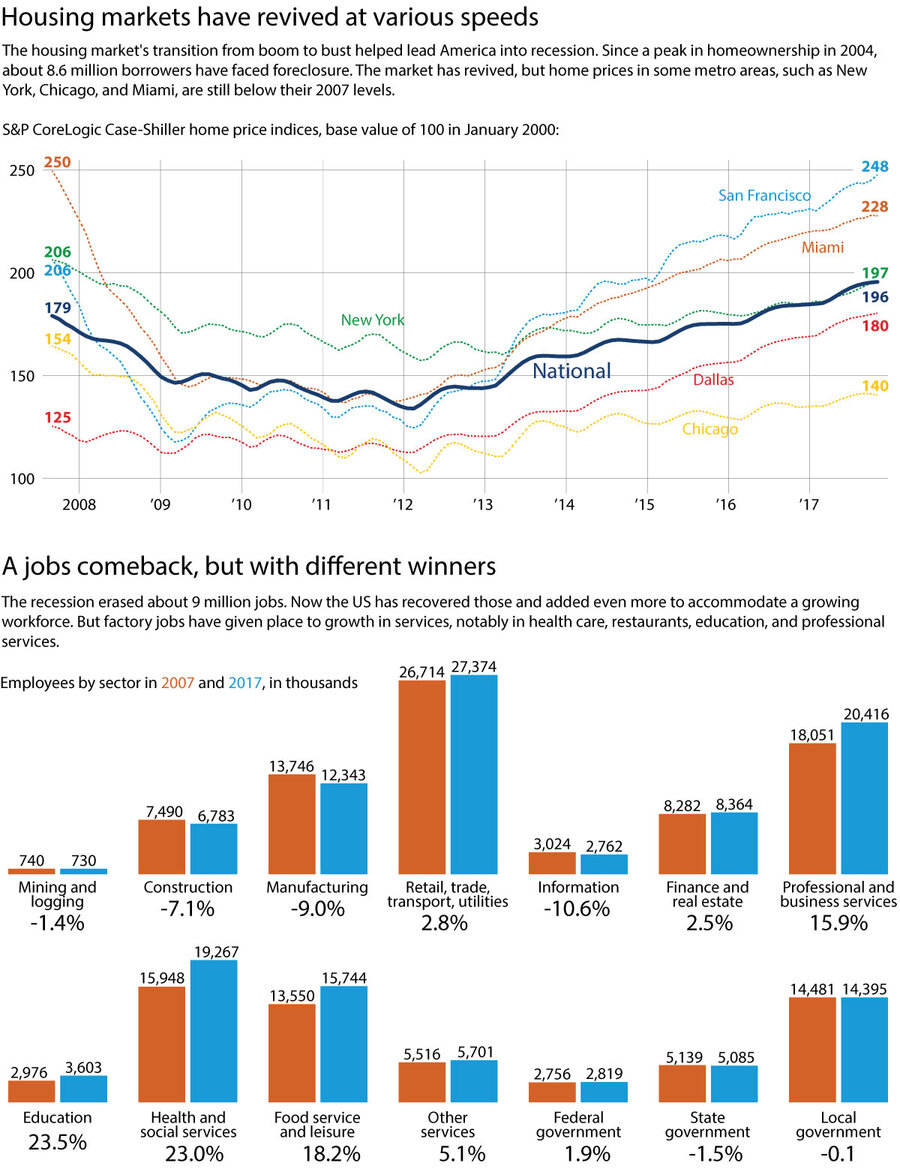Labels can be useful identifiers – until they are not. Shifts in the American evangelical movement suggest that the label is increasingly papering over a growing split on faith and identity.
Monitor Daily Podcast
- Follow us:
- Apple Podcasts
- Spotify
- RSS Feed
- Download
 Mark Sappenfield
Mark Sappenfield
I often get a question from readers: Whom can I trust? The Monitor offers insight and depth. But the readers’ question is usually more about “fake news”: Who gives me reliability on the nitty-gritty facts about Uranium One or the Mueller investigation?
I prefer to flip the question: Are facts really what seem to be dividing us? Is “fake news” a cause or an effect? That’s why I tell people to go to the Pew Research Center. For example, its 17 striking findings from 2017 is must-read stuff for anyone who wants to understand the forces actually driving the United States and the world.
The first finding explains so much of what we see in the US today. How people see key values differs by age, race, religion, and education – but not by a huge amount. When it comes to political party, however, the divide skyrockets. Think about that. When we look at the world through the lens of politics, our view literally changes. We think we have less in common than we do when we look through any other lens.
A 2015 study on political identity and trust found that “America’s political polarization is driven more by incorrect beliefs and stereotypes about the other side than distaste with those people,” according to a Harvard Business School review.
The deeper “fake news,” you might say, is how often we’re manipulated into blindly distrusting one another.
Among our five stories today, we look at what it means to be an “Evangelical,” the ethical dilemma of reporting on white supremacists, and what needs to change to reduce child marriages in Guatemala.










